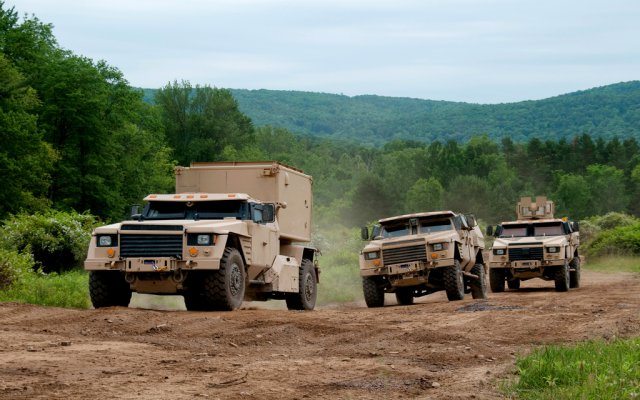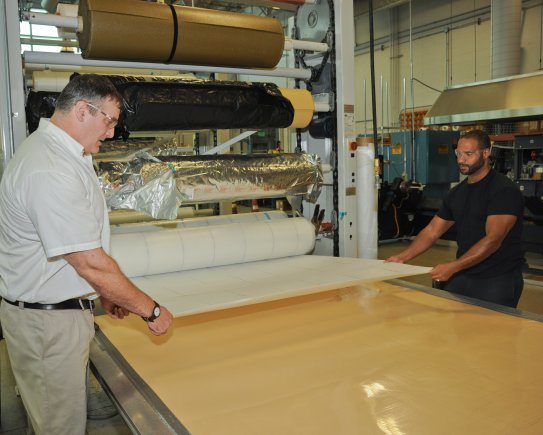All 66 Joint Light Tactical Vehicle prototypes have been delivered to the military so that 14 months of testing can begin at Aberdeen Proving Ground, Md., and Yuma Proving Ground, Ariz. Full-scale testing is scheduled to begin next week, according to the Joint Light Tactical Vehicle joint program office.
Each of the three vendors competing in the current research and development program delivered a total of 22 vehicles and six trailers to the two locations, said Col. John Cavedo, the joint project manager. The vendors are Oshkosh Defense, which builds the mine-resistant, ambush-protected vehicle and others; Lockheed Martin, which produces the High Mobility Artillery Rocket System; and AM General, which builds the Humvee.
While this marks the beginning of full-scale testing, a certain amount of testing in the current phase has already been done, he added, pointing to: more than 400 ballistic and blast tests on armor testing samples; underbody blast testing; and more than 1,000 miles in shakedown testing.
But next week Soldiers from the Army Test and Evaluation Command and personnel from the Defense Department’s Office of Test and Evaluation will put the vehicles through realistic and rigorous field testing during a 14-month-long government performance testing period, Cavedo said.
Once that is completed in fiscal year 2015, the Army and Marine Corps look forward to awarding a production contract to a single vendor for nearly 55,000 vehicles.
The Joint Light Tactical Vehicle, or JLTV, fills a big gap in vehicle needs for the Army and the Marine Corps, Cavedo said. In the 20th century, the strategy was to build heavily armored vehicles for front-line service and lighter vehicles such as Humvees for rear-area duty.
But 9/11 changed all that, he said. Battle lines are now blurred, and there is need for a vehicle that can carry a lot of gear and personnel, and capitalize on emerging networks. Such a vehicle must also be heavily armored and have plenty of speed, maneuverability and power.
According to the Army’s Equipment Modernization Strategy, “the Army is moving forward with developing the JLTV to fill the capability gaps in the light vehicle fleet by carefully balancing performance, payload and protection. The JLTV provides the same level of protection as the Mine-Resistant, Ambush-Protected All-Terrain Vehicle, or M-ATV, better network integration than the [Humvee] and better mobility and transportability than the M-ATV.”
The price tag had to be right too, he added. In fiscal year 2011 dollars, each vehicle coming off the assembly line could not exceed $250,000.
“We’ve insisted on that,” he said. “So the program is on schedule and on budget.”
Cavedo said he sees the testing progressing on schedule. He also thinks members of Congress see the critical need for the vehicle.
Long-term plans include the first Army units receiving JLTVs by fiscal year 2018 and all 49,000 JLTVs delivered to the Army by sometime in the 2030 decade, he said. The Marines will acquire a total of 5,500.











